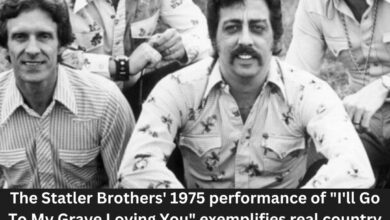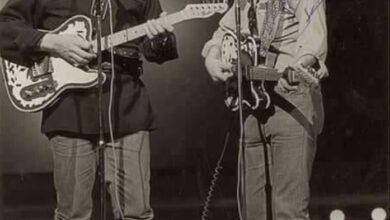The Authentic Melody of The Soggy Bottom Boys in “Man of Constant Sorrow”
“Man of Constant Sorrow” is a ballad steeped in the rich tradition of American folk music, celebrated for its powerful narrative and emotional depth. Its origins can be traced back to the early 20th century, often associated with the Appalachian region where oral storytelling and musical traditions thrived. The song has evolved over decades, reflecting the diverse experiences of those who have sung it, and continues to resonate with listeners across generations. At its core, the song eloquently expresses feelings of sorrow and a sense of enduring hardship, making it a poignant reflection of the human experience.
The version of “Man of Constant Sorrow” that gained wide recognition was performed by the fictional band, the Soggy Bottom Boys, in the Coen brothers’ film “O Brother, Where Art Thou?” This iconic movie, set during the Great Depression in the rural South, enhances the narrative of struggling yet spirited characters seeking redemption. The film adeptly combines humor, adventure, and a strong sense of place, while also highlighting the profound significance of music in shaping their journeys. The integration of the song into the storyline not only elevates the characters’ emotional arcs but also serves as a reminder of the struggles faced by the working class during that era.
In the film, the Soggy Bottom Boys’ performance of “Man of Constant Sorrow” captures the attention of audiences, showcasing how music can serve as both a form of liberation and a means of expressing deep emotional truths. This portrayal played a significant role in introducing a new generation to the depths of American roots music, including bluegrass and folk traditions, which had often been overshadowed by mainstream genres. The soundtrack itself became a cultural phenomenon, earning accolades and rekindling interest in these traditional musical forms.
Dan Tyminski’s rendition in “O Brother, Where Art Thou?” stands out not only for its authenticity but also for Tyminski’s deep emotional delivery. As a stalwart of bluegrass music, having worked extensively with Alison Krauss and Union Station, Tyminski captures a sense of longing and melancholy through his vocal performance. His bluegrass-infused adaptation pays respect to the traditional folk origins of the song while appealing to modern sensibilities. Tyminski’s skillful guitar work and heartfelt vocals highlight the timeless themes of struggle and sorrow that permeate the song, making it a definitive version that resonates with many.
The lyrics of “Man of Constant Sorrow” explore universal themes of loss, regret, and the longing for redemption. The haunting quality of its melody, combined with the evocative imagery of the lyrics, creates a narrative that listeners can personally relate to regardless of their individual experiences. These themes of sorrow transcend specific contexts, allowing the song to serve as both a comfort to those suffering and a reminder of shared human struggles. This characteristic is what has ensured the song’s place in the repertoire of countless artists.
Many notable artists have covered “Man of Constant Sorrow” across various genres, demonstrating its versatility and relevance. From bluegrass to rock and even pop adaptations, each cover sheds new light on the song’s narrative, keeping it alive in the public consciousness. Such reinterpretations allow contemporary audiences to engage with the song in different ways, affirming its timeless nature while fostering a renaissance of interest in folk traditions.
The collaborative multi-part harmony found in Tyminski’s rendition—supported by the vocal contributions of Harley Allen and Pat Enright—deepens the emotional impact of the song. In folk and bluegrass music, harmony serves not only as a vocal embellishment but as a way to create a collective voice that represents shared experiences within a community. This sense of collective storytelling enhances the song’s ability to connect with listeners on a profound level.
Moreover, the successful revival of interest in folk and bluegrass music sparked by “O Brother, Where Art Thou?” led to a vibrant culture of music festivals and gatherings that celebrate these traditional genres. Through various events, musicians and fans alike have explored the roots of American music, fostering an appreciation for the storytelling traditions that have shaped the landscape of contemporary music. This renewed interest provides aspiring artists with new opportunities to pay homage to the past while innovating for the future.
As Dan Tyminski continues to thrive in the music industry, the legacy of “Man of Constant Sorrow” remains secure. The song stands as a testament to the resilience and creativity of American folk traditions, reflecting both individual and collective narratives that echo throughout history. Each performance and recording reaffirms the song’s emotional core, ensuring its continued relevance in a constantly evolving musical landscape.
Ultimately, “Man of Constant Sorrow” encapsulates the spirit of folk music as a vessel for storytelling, preserving the complexities of human emotion and experience. Its themes of sorrow and longing resonate deeply with listeners, encouraging a shared understanding of life’s challenges. As it endures through time, the song exemplifies the power of music to forge connections, evoke empathy, and celebrate the beauty found within the trials of existence. Through every rendition, this heartfelt ballad continues to unite audiences, reminding us all of the shared human condition that transcends time and place.





